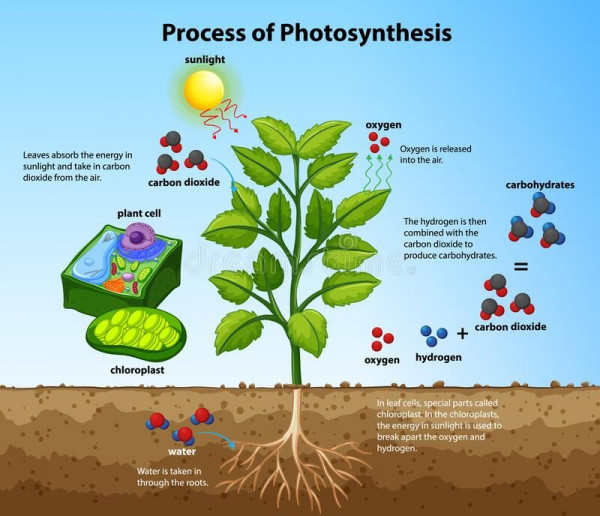





September 17, 2022
Photosynthetic reaction
Photosynthesis is a chemical reaction that occurs in the green chloroplasts of plants. It needs light from the Sun and converts the reactants carbon dioxide and water into glucose and the by-product oxygen.
Reactants and products
Because it requires light and the green chlorophyll pigment in chloroplasts, photosynthesis mainly occurs in the leaves of plants that face the Sun and possess many chloroplasts.
The palisade mesophyll leaf cells have the highest number of chloroplasts and so complete the majority of the photosynthesis. Gases, including carbon dioxide, are absorbed from the air into spaces between the spongy mesophyll cells of a leaf.
Water is absorbed by osmosis into the root hair cells before being transported to the leaves (and rest of the plant) through xylem vessels in transpiration. Plants complete photosynthesis to produce glucose. They require light to do this, so photosynthesis cannot occur in the dark.
Because it requires energy to work, it is an endothermic reaction.




































































































































































































































Science Clinic Private Tutors





5.0 rating of Parents reviews